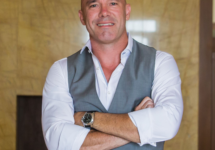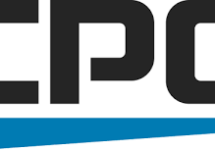While it may seem like a post digital concern, brand safety issues have existed since the dawn of print media. If we go back to 1991 where the Sunday newspaper had a circulation of 62 million in the US, ensuring your ad did not appear next to controversial content required full-time resources. A travel brand advertising to summer vacationers probably did not want an expensive full-color placement near a story about a plane crash. History is truly repeating itself when it comes to brand safety, however the difference between now and then, is the complexity and scale required to maintain brand safe spaces today.
The industry is struggling to keep up with the pace of online bad actors. As major online publishers increase resources to combat everything from fake news to hate speech, online offenders are becoming more advanced. This modern day Sisyphus scenario has marketers questioning whether or not digital environments can ever be safe. Brand safety isn’t just a trending topic; it’s a real issue that is negatively affecting advertisers, publishers, and anyone online. As we approach a major election year in the US, here are my predictions for how the industry will handle brand safety.
An industry wide effort is required
Publishers are rightfully receiving much of the sting for allowing salacious or false content to reach online audiences. We’ve all read the reports on how major brands’ ads were appearing ahead of and alongside YouTube videos serving as terrorist recruitment. And we’ve all read about the “coordinated inauthentic activity” on Facebook. In fact, according to a new Pew Research Center survey, most Americans agree that the creation and spread of made-up news is causing significant harm to the nation and must be stopped. The most problematic publishers are listening and are attempting to put solutions into place.
During this year’s Cannes Lions, Facebook, Google, and Twitter launched the first industry-wide initiative to improve online safety partnering with global advertising agencies and brands. Agencies including WPP, Publicis and Omnicom, and brands such as Procter & Gamble and Unilever, have realized the need for industry monitoring and want to stop the spread of harmful or fake content. “We need to fix the whole ecosystem, but Facebook and Google are the biggest players across all online media,” said Procter & Gamble’s Chief Brand Officer, Marc Pritchard. He added that his main goal for the alliance is to, “create standards to control and remove hateful content and comments on online platforms.” While this move toward self-regulation is a step in the right direction, this alliance cannot accomplish all the work alone. Partnership with neutral organizations like the ANA are required.
One of the appealing things about eBay is that by its very nature, as an ecommerce marketplace, it is free of controversial content that can plague traditional publishers or social platforms. eBay has built immense trust among it’s community of buyers and sellers and this level of trust is also reflected in our ads business. eBay offers advertisers a safe and more controlled environment in regards to how brands appear. And with mountains of shopper data from our logged-in user base, eBay can also segment shoppers so brands don’t have to jeopardize overall integrity of what digital and mass scale can do for a campaign. However, as eBay considers expanding its business and taking in reviews and content, we know we will encounter the same challenges as Facebook and Google which is why we’re committed to putting the right brand protections in place before these issues surface.
Accreditation matters
The complexities that exist online vastly surpass those that existed in pre-digital days. The sheer volume of hate speech, fake news, gun safety, and election falsities online, poses a very complicated environment that has to be moderated on a high level. The amount of work to be done is overwhelming if brands, agencies, and publishers go at it alone.
Third party verification and accreditation must become the norm for anyone with an online platform. It’s not an easy feat to take on and often times publishers are concerned that the process will expose too much of their inner workings. However, I’d ask what’s worse: having to open back-end systems in order to begin the accreditation process or failing to provide a brand safe environment? As stated by John Montgomery, global vice-president of brand safety at GroupM, “third-party verification of harmful content on social media is one of its goals.” And while sites relying heavily on user generated content (UGC) are under more scrutiny, every online environment is susceptible to a brand safety blunder.
Safety comes at a cost
Moving forward, brand safety will continue to be a heightened concern, not just for advertisers but for specific platforms that have encountered challenges in the past. Facebook and Google are already applying more money and human capital to resolving issues of brand safety. This will lead to better selection of highly controlled environments, but with possible increased costs to brands.
To circumvent higher prices, agencies and brands are going to have to be more strategic in how they select their media partners. Finding different outlets for brands, where they can achieve scale and have access to highly qualified audiences without costs inflated for brand safety, will become integral to media plans.
While we’re still in the early days of brand safety, it’s reassuring to note that many of us are having the difficult conversations. As a board member on the ANA and a CMO of a global brand, my decisions around brand safety don’t just come down to how my platform and brand will be affected. I always look at the industry as a whole, understanding that my approach to brand safety can influence how other brands and publishers tackle the issue. As brand safety problems evolve beyond adjacency and fraudulent views to how we manage influencers and regulatory oversight, solid partnerships with organizations like the ANA will ignite change. After all, brand safety isn’t just a problem for brands; it’s a problem for our consumers as well.
To learn more about the ANA and how to become a member, please visit https://www.ana.net/membership.
Suzy Deering
Global CMO, eBay





